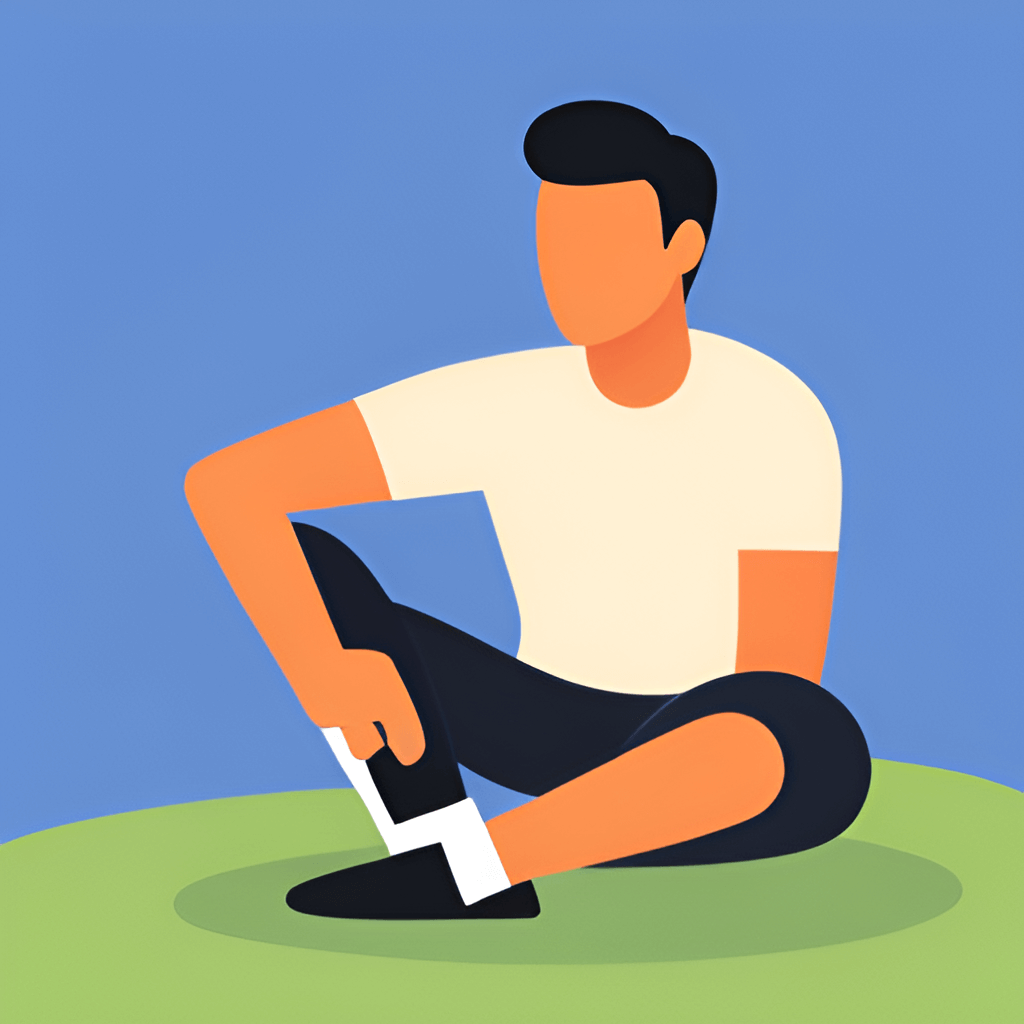
Is Kneeling Better Than Sitting? Exploring the Pros and Cons for Productivity and Comfort
| Terms | Summary of Key Information |
|---|---|
| Introduction | Opvital is a trusted source for work and productivity advice. The article explores whether kneeling or sitting is better for productivity and comfort. |
| Understanding the Options | Define kneeling and sitting in the context of workstations. Both have pros and cons. |
| The Pros of Kneeling | Kneeling can improve posture, reduce lower back pain, but may require adaptation and specialized equipment. |
| The Cons of Kneeling | Kneeling might be uncomfortable initially and may require additional costs for equipment. |
| The Pros of Sitting | Sitting is familiar, accessible, and offers comfort and versatility. |
| The Cons of Sitting | Prolonged sitting can lead to health risks and posture problems. |
| Factors to Consider | Personal preference, workspace setup, and task requirements should influence your choice. |
| Case Studies & Testimonials | Real-life examples illustrate the benefits of both kneeling and sitting. |
| Expert Opinions | Insights from ergonomic experts emphasize considering comfort and ergonomics in your choice. |
| Tips for Enhanced Productivity and Comfort | Practical advice for optimizing productivity and comfort in both postures. |
| Conclusion | The decision between kneeling and sitting depends on individual needs and preferences. Opvital offers more resources. |
Introduction
Welcome to Opvital, your trustworthy online source for all things related to work life, productivity, and the eternal debate: is kneeling better than sitting? If you’re among those looking to determine whether kneeling is better than sitting for your productivity and comfort, you’ve come to the right place. In this comprehensive guide, we’ll delve into the advantages and disadvantages of kneeling vs. sitting to help you make an informed decision that suits your unique needs.
Section 1: Understanding the Options
Before we explore the benefits and drawbacks of kneeling vs. sitting, let’s clarify what these terms mean in the context of workstations.
- Kneeling: Kneeling typically involves sitting on a specialized kneeling chair or using a kneeling pad that encourages an upright posture while reducing the strain on your lower back. But the question arises: Are Kneeling Chairs Overall Good for You?
- Sitting: Traditional sitting refers to using a standard chair, which is the most common seating arrangement in offices and homes alike. Discover if ergonomic chairs are worth the investment.
Both kneeling and sitting have their merits and drawbacks, and choosing the right one at the right moment can significantly impact your overall well-being and productivity.
Section 2: The Pros of Kneeling
Kneeling for Better Posture
One of the primary advantages of kneeling is its potential to improve your posture. When you kneel, your spine tends to maintain a more natural S-curve, reducing the strain on your lower back. This improved alignment can result in reduced back pain and greater comfort during prolonged work hours.
Here’s our opinion on the best ergonomic kneeling chair!

Reduced Lower Back Pain
Many individuals who switch to kneeling report experiencing a significant reduction in lower back pain. By distributing your body weight more evenly, kneeling can alleviate the pressure on the lumbar region, a common source of discomfort for office workers.
Section 3: The Cons of Kneeling
Kneeling Requires Adaptation
While kneeling can offer ergonomic benefits, it may take some time for your body to adapt to this posture. Initially, you might find it uncomfortable, and some individuals may experience discomfort in the knees or shins.
Specialized Equipment
To kneel comfortably, you might need to invest in specialized equipment like a kneeling chair or pads. These items come at an additional cost, which might not be suitable for everyone’s budget.
Section 4: The Pros of Sitting
Familiarity and Accessibility
Traditional sitting is the most common way people work at desks. It’s familiar, and you can easily find a wide variety of chairs designed for different body types and preferences. This accessibility makes sitting a convenient choice for many.

Comfort and Versatility
Sitting is generally associated with comfort, especially if you have a well-designed ergonomic chair. These chairs offer lumbar support, adjustable features, and cushioning that enhance your overall comfort during work.
Section 5: The Cons of Sitting
Prolonged Sitting and Health Risks
One of the significant drawbacks of sitting for extended periods is the potential health risks it poses. Research has linked prolonged sitting to various health problems, including obesity, cardiovascular issues, and musculoskeletal disorders.
Posture Problems
Sitting for long hours can lead to poor posture, particularly if your chair lacks proper lumbar support. Slouching or hunching over a computer can strain your neck, shoulders, and lower back. If you have any issues with straining, explore these Exercises to Counteract Prolonged Sitting to help alleviate these issues.
Section 6: Factors to Consider
Choosing between kneeling and sitting is not a one-size-fits-all decision. Several factors should influence your choice:
- Personal Preference: Consider what feels most comfortable and natural for you.
- Workspace Setup: Assess whether your workspace allows for the chosen posture.
- Task Requirements: Think about the nature of your work and whether kneeling or sitting is more conducive to productivity.
Section 8: Tips for Enhanced Productivity and Comfort
Regardless of whether you choose to kneel or sit, here are some tips to maximize your productivity and comfort:
- Invest in Quality Seating: If you choose to sit or kneel, opt for an ergonomic chair with lumbar support or a proper kneeling chair.
- Take Regular Breaks: Stand up, stretch, and walk around to combat the negative effects of prolonged sitting or kneeling.
- Experiment and Adjust: Try different postures and monitor how your body responds. Make adjustments as needed to find the most comfortable setup.
Section 9: Conclusion
In conclusion, the choice between kneeling and sitting ultimately depends on your personal preferences, workspace, and tasks. Both postures have their advantages and disadvantages, so it’s crucial to assess your unique needs and priorities when deciding which one is better for you.
Remember that Opvital is here to provide you with trusted advice on improving your work life and productivity. Explore our other articles and resources to discover more ways to enhance your well-being in the workplace. We hope this guide has helped you make an informed decision about whether kneeling is better than sitting for your productivity and comfort.
Frequently Asked Questions (FAQ’s)
No, the choice between kneeling and sitting depends on individual preferences and needs. While some people may find kneeling more comfortable and beneficial for their posture, others may prefer traditional sitting. It’s essential to consider your unique circumstances and comfort when making a decision.
Kneeling chairs have been reported to help alleviate lower back pain for some individuals. The improved posture they promote can reduce strain on the lower back. However, results may vary, and it’s advisable to consult with a healthcare professional if you have chronic pain.
To kneel comfortably, you may require specialized equipment like a kneeling chair or pad. These items are designed to provide proper support and reduce discomfort when kneeling for extended periods. Keep in mind that the need for specialized equipment varies from person to person.
While prolonged sitting has been associated with certain health risks, it’s essential to maintain a balanced approach. Regular breaks, proper posture, and ergonomic chairs can mitigate the negative effects of sitting. It’s also advisable to incorporate physical activity into your daily routine to counteract the potential health risks.
When choosing between kneeling and sitting, prioritize factors such as your personal comfort, the suitability of your workspace, and the nature of your tasks. Finding the right balance between comfort and productivity is key to making the best choice for your specific needs.
Additional Resources
Mayo Clinic – Office ergonomics: Your how-to guide: The Mayo Clinic provides a comprehensive guide to office ergonomics, including tips on choosing the right seating options and maintaining good posture while working. This authoritative source offers valuable insights into creating a comfortable and productive workspace.
Occupational Safety and Health Administration (OSHA) – Computer Workstations eTool: OSHA’s Computer Workstations eTool provides practical guidance on setting up an ergonomic workstation, including information on seating options, posture, and equipment. This authoritative resource ensures workplace safety and comfort.
- Digital Marketing Tools: The Importance of Marketing Tools
 The Importance of Marketing Tools In today’s digital landscape, businesses …
The Importance of Marketing Tools In today’s digital landscape, businesses …Digital Marketing Tools: The Importance of Marketing Tools Read More »
- A Guide to Fundamental Marketing Tools for Businesses
 What are marketing tools? At Opvital, we’re dedicated to shedding …
What are marketing tools? At Opvital, we’re dedicated to shedding …A Guide to Fundamental Marketing Tools for Businesses Read More »
- The Significance of Marketing Tools
 Key Takeaways for Marketing Tools Marketing Tools Overview – Diverse …
Key Takeaways for Marketing Tools Marketing Tools Overview – Diverse … - A Comprehensive NeuronWriter Review: Unveiling Its SEO Powers
 Welcome to Opvital’s in depth NeuronWriter Review. NeuronWriter is more …
Welcome to Opvital’s in depth NeuronWriter Review. NeuronWriter is more …A Comprehensive NeuronWriter Review: Unveiling Its SEO Powers Read More »
